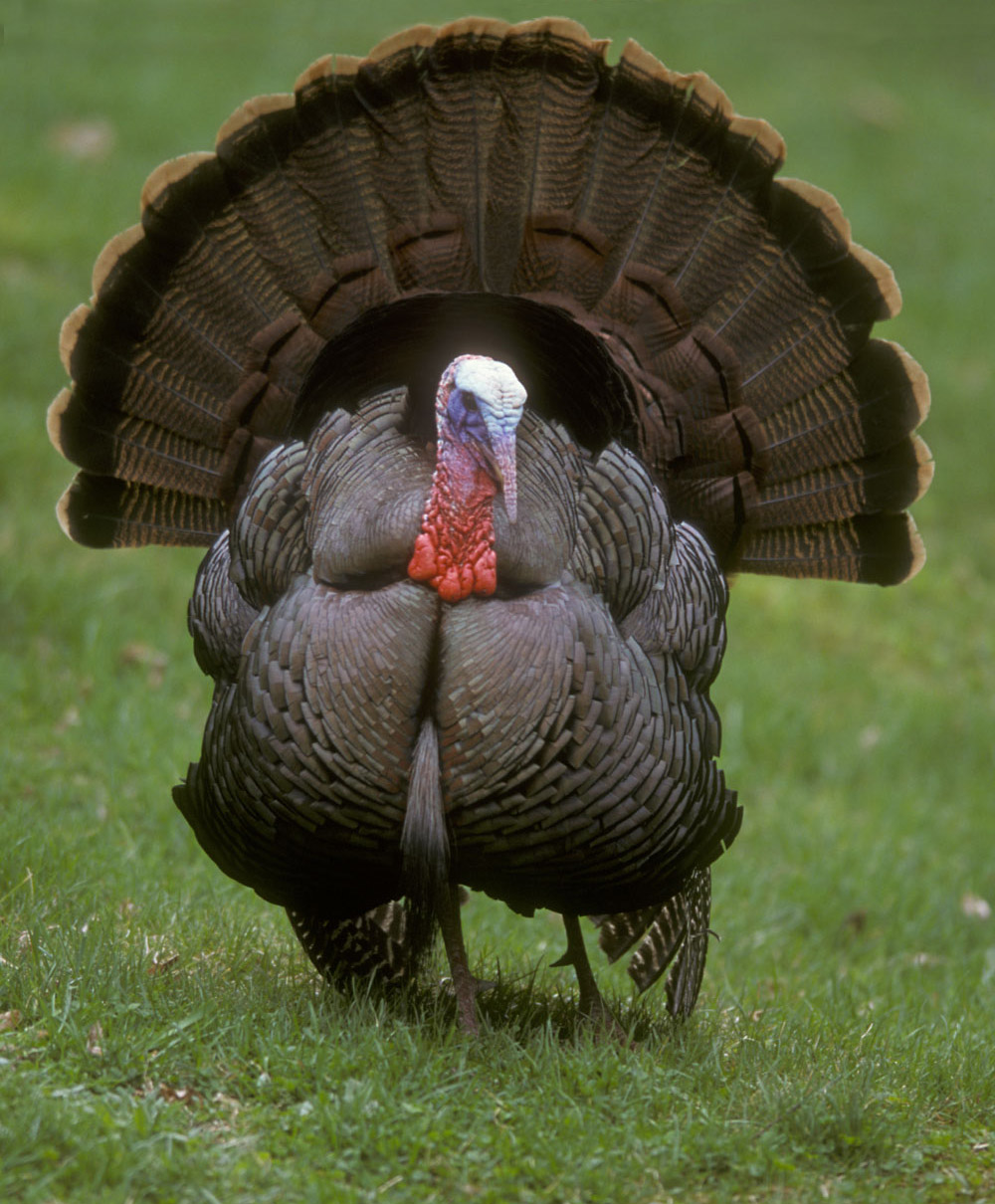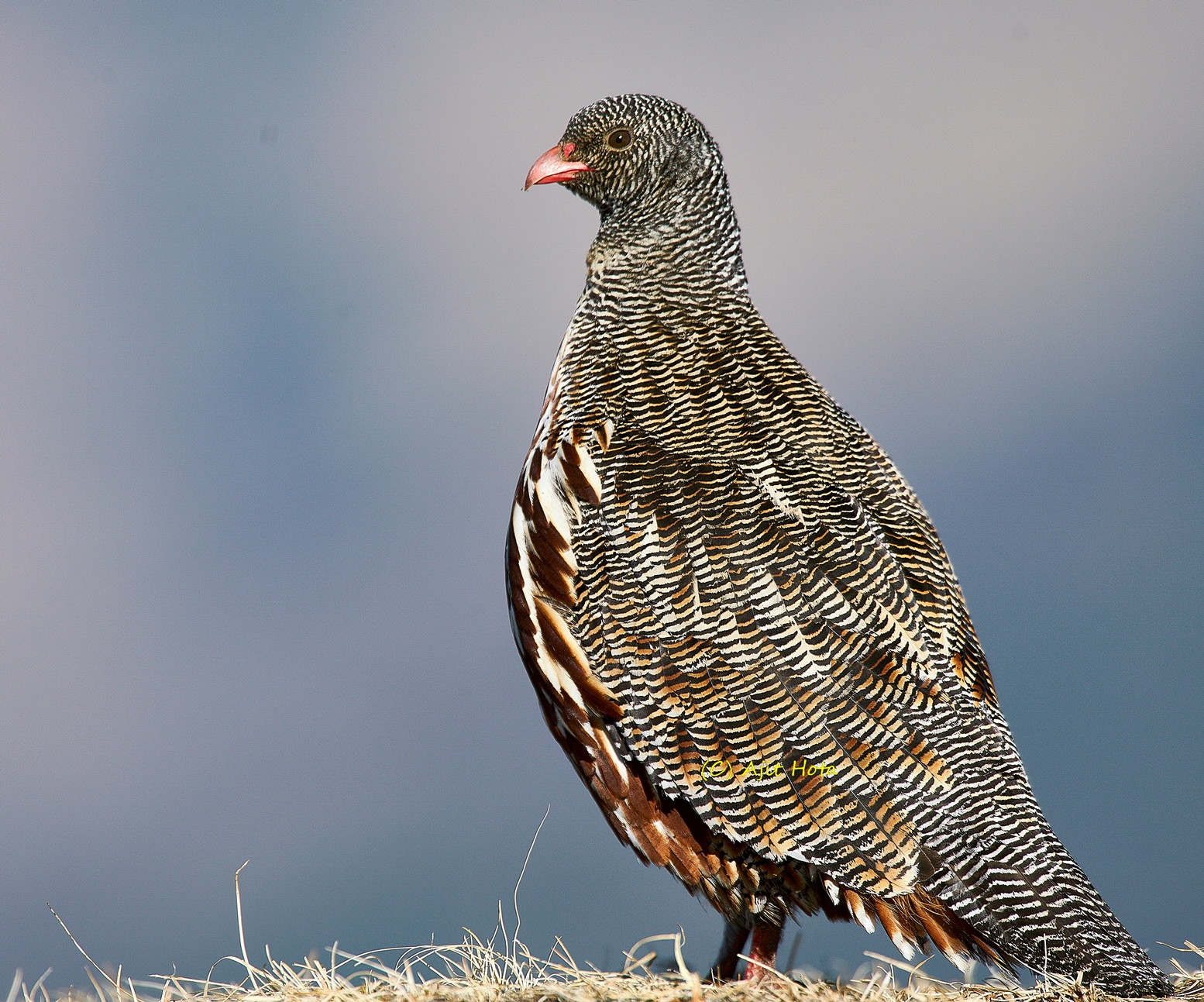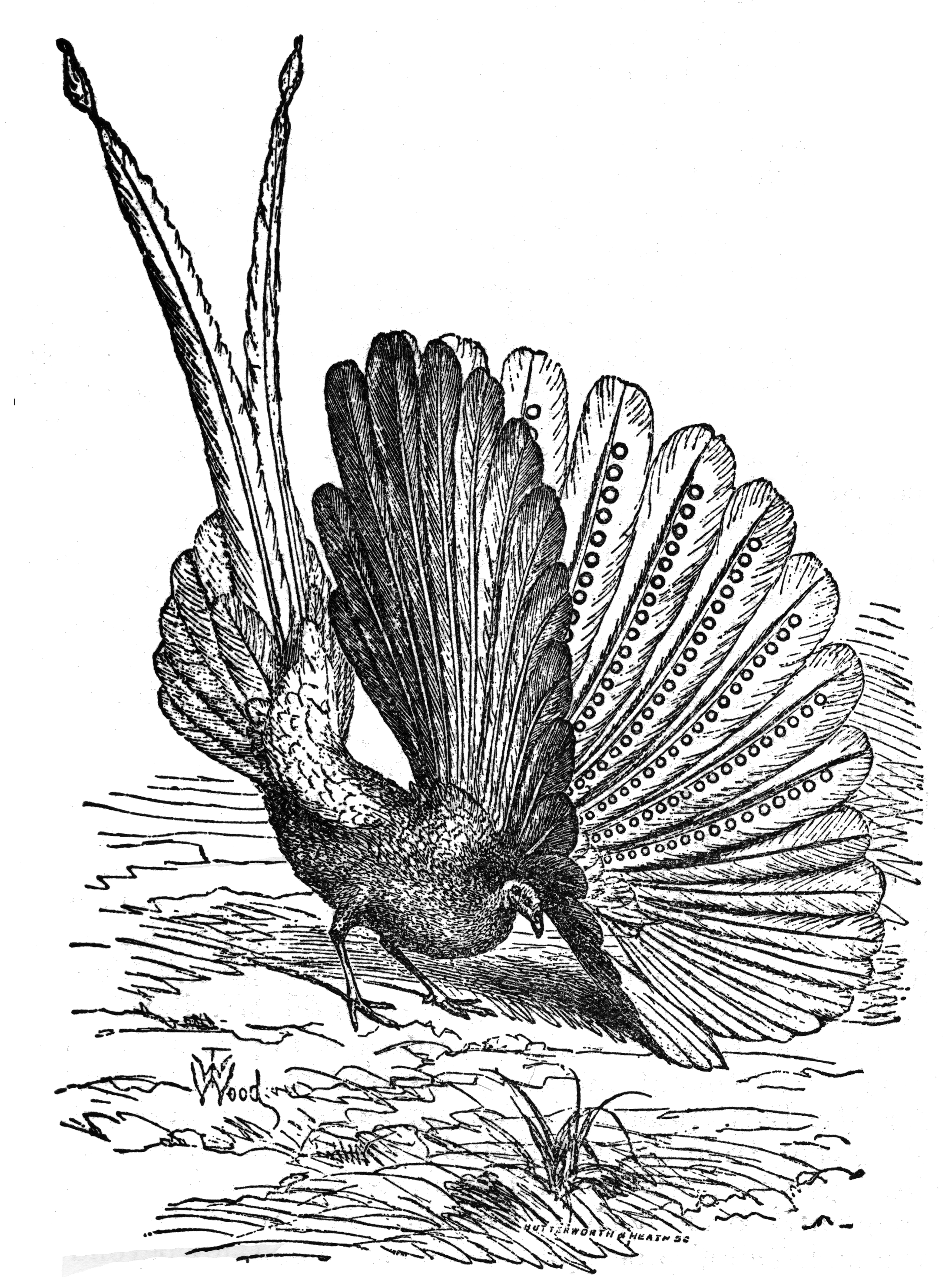|
Pavonini
Pavonini is a tribe (biology), tribe of bird in the subfamily Phasianinae. Members of this family are primarily found in tropical Asia, along with one species in the Congolian rainforests, Congo Rainforest in Africa. It contains two of the most charismatic members of the Phasianidae, the peafowl and the Argus (bird), arguses. This grouping was supported by a 2021 phylogenetic analysis of Galliformes, and accepted by the International Ornithologists' Union, International Ornithological Congress. The tribe name is accepted by the ''Howard and Moore Complete Checklist of the Birds of the World.'' Species References {{Taxonbar, from=Q108113041 Bird tribes Pavonini Taxa named by Constantine Samuel Rafinesque ... [...More Info...] [...Related Items...] OR: [Wikipedia] [Google] [Baidu] |
Argus (bird)
An argus, or argus pheasant, is a member of a clade in the tribe Pavonini of the family Phasianidae, containing two species of bird that are closely related to peafowl. Description It has hundreds or thousands of tiny white spots on its plumage pattern, and thus its naming might have been in reference to the mythical hundred-eyed giant, Argus Panoptes. These birds have a body shape similar to that of a turkey, however the males have long wing and tail feathers. Males are over six feet long while females are just under three feet long. Their feathers are brown or tan, with black mottling. The Male Argus have round, eye-like circles on their feathers. Males have quite long tails, with some tails measuring nearly five feet long. Females choose males with the longest tails because it means they are the fastest and smartest of the other birds. This species of birds is primarily found in tropical regions, or places with lots of plant growth and rainfall. The Great Argus lives in ... [...More Info...] [...Related Items...] OR: [Wikipedia] [Google] [Baidu] |
Peafowl
Peafowl is a common name for two bird species of the genus '' Pavo'' and one species of the closely related genus '' Afropavo'' within the tribe Pavonini of the family Phasianidae (the pheasants and their allies). Male peafowl are referred to as peacocks, and female peafowl are referred to as peahens. The two Asiatic species are the blue or Indian peafowl originally from the Indian subcontinent, and the green peafowl from Southeast Asia. The third peafowl species, the Congo peafowl, is native only to the Congo Basin. Male peafowl are known for their piercing calls and their extravagant plumage. The latter is especially prominent in the Asiatic species, which have an eye-spotted "tail" or "train" of covert feathers, which they display as part of a courtship ritual. The functions of the elaborate iridescent coloration and large "train" of peacocks have been the subject of extensive scientific debate. Charles Darwin suggested that they served to attract females, and the ... [...More Info...] [...Related Items...] OR: [Wikipedia] [Google] [Baidu] |
Galliformes
Galliformes is an order (biology), order of heavy-bodied ground-feeding birds that includes turkey (bird), turkeys, chickens, Old World quail, quail, and other landfowl. Gallinaceous birds, as they are called, are important in their ecosystems as seed dispersers and predators, and are often reared by humans for their meat and eggs, or hunted as game birds. The order contains about 290 species, inhabiting every continent except Antarctica, and divided into five Family (biology), families: Phasianidae (including chicken, quail, partridges, pheasants, turkeys, peafowl (peacocks) and grouse), Odontophoridae (New World quail), Numididae (guinea fowl), Cracidae (including chachalacas and curassows), and Megapodiidae (incubator birds like malleefowl and Brushturkey, brush-turkeys). They adapt to most environments except for innermost deserts and perpetual ice. Many gallinaceous species are skilled runners and escape predators by running rather than flying. Males of most species a ... [...More Info...] [...Related Items...] OR: [Wikipedia] [Google] [Baidu] |
Afropavo
The Congo peafowl (''Afropavo congensis''), also known as the African peafowl or ''mbulu'' by the Bakôngo, is a species of peafowl native to the Congo Basin. It is one of three peafowl species and the only member of the subfamily Pavoninae native to Africa. It is listed as Near Threatened on the IUCN Red List. History Dr. James P. Chapin of the New York Zoological Society on an unsuccessful African expedition in search of the Okapi noticed that the native Congolese headdresses contained long reddish-brown feathers that he could not identify with any previously known species of bird. In 1934, Chapin visited the Royal Museum of Central Africa in Tervuren and saw two stuffed specimens with similar feathers labeled as the 'Indian peacock' which he later discovered to be the Congo peafowl, a completely different species. In 1955, Chapin managed to find seven specimens of the species. The Congo peafowl has physical characteristics of both the peafowl and the guineafowl, which may ... [...More Info...] [...Related Items...] OR: [Wikipedia] [Google] [Baidu] |
Phasianinae
The Phasianinae (Thomas Horsfield, Horsfield, 1821) are a subfamily (biology), subfamily of the pheasant family (Phasianidae) of landfowl, the order (biology), order Galliformes. The subfamily includes true pheasants, tragopans, grouse, Turkey (bird), turkey and similar birds. Although this subfamily was considered Monophyly, monophyletic and separated from the partridges, francolins, and Old World quails (Perdicinae) until the early 1990s, Molecular phylogenetics, molecular phylogenies have shown that this placement is paraphyletic. For example, some partridges ''(''genus ''Perdix'') are more closely affiliated to pheasants, whereas Old World quails and partridges from the genus ''Alectoris'' are closer to junglefowls. There are two clades in the Phasianinae: the erectile clade and the non-erectile clade, referring to erectile tissue in the non-feathered parts of the face. Both clades are believed to have diverged during the early Oligocene, about 30 million years ago. The P ... [...More Info...] [...Related Items...] OR: [Wikipedia] [Google] [Baidu] |
Congo Peafowl
The Congo peafowl (''Afropavo congensis''), also known as the African peafowl or ''mbulu'' by the Bakôngo, is a species of peafowl native to the Congo Basin. It is one of three peafowl species and the only member of the subfamily Pavoninae native to Africa. It is listed as Near Threatened on the IUCN Red List. History Dr. James P. Chapin of the New York Zoological Society on an unsuccessful African expedition in search of the Okapi noticed that the native Congolese headdresses contained long reddish-brown feathers that he could not identify with any previously known species of bird. In 1934, Chapin visited the Royal Museum of Central Africa in Tervuren and saw two stuffed specimens with similar feathers labeled as the 'Indian peacock' which he later discovered to be the Congo peafowl, a completely different species. In 1955, Chapin managed to find seven specimens of the species. The Congo peafowl has physical characteristics of both the peafowl and the guineafowl, which ... [...More Info...] [...Related Items...] OR: [Wikipedia] [Google] [Baidu] |
Afropavo Congensis -Artis Zoo -Netherlands -male-8a
The Congo peafowl (''Afropavo congensis''), also known as the African peafowl or ''mbulu'' by the Bakôngo, is a species of peafowl native to the Congo Basin. It is one of three peafowl species and the only member of the subfamily Pavoninae native to Africa. It is listed as Near Threatened on the IUCN Red List. History Dr. James P. Chapin of the New York Zoological Society on an unsuccessful African expedition in search of the Okapi noticed that the native Congolese headdresses contained long reddish-brown feathers that he could not identify with any previously known species of bird. In 1934, Chapin visited the Royal Museum of Central Africa in Tervuren and saw two stuffed specimens with similar feathers labeled as the 'Indian peacock' which he later discovered to be the Congo peafowl, a completely different species. In 1955, Chapin managed to find seven specimens of the species. The Congo peafowl has physical characteristics of both the peafowl and the guineafowl, which may ... [...More Info...] [...Related Items...] OR: [Wikipedia] [Google] [Baidu] |
Phasianidae
Phasianidae is a family (biology), family of heavy, ground-living birds, which includes pheasants, grouse, partridges, junglefowl, chickens, Turkey bird, turkeys, Old World quail, and peafowl. The family includes many of the most popular Game (hunting), gamebirds. The family includes 185 species divided into 54 genera. It was formerly broken up into two subfamily (biology), subfamilies, the Phasianinae and the Perdicinae. However, this treatment is now known to be paraphyly, paraphyletic and polyphyly, polyphyletic, respectively, and more recent evidence supports breaking it up into two subfamilies: Rollulinae and Phasianinae, with the latter containing multiple Tribe (biology), tribes within two clades. The New World quail (Odontophoridae) and guineafowl (Numididae) were formerly sometimes included in this family, but are now typically placed in families of their own; conversely, grouse and turkey (bird), turkeys, formerly often treated as distinct families (Tetraonidae and Melea ... [...More Info...] [...Related Items...] OR: [Wikipedia] [Google] [Baidu] |
Great Argus
The great argus (''Argusianus argus''), or greater argus, is a large species of pheasant from Southeast Asia. It is known for its impressive plumage and courtship behavior. It is not to be confused with the two species of closely related crested argus, genus ''Rheinardia''. Taxonomy Carl Linnaeus gave the great argus its specific name (from which its common name and genus name are derived) because of the intricate eye-like patterns on its wings, in reference to Argus, a hundred-eyed giant in Greek mythology. There are two subspecies recognized: Nominate ''argus'' of the Malay peninsula and Sumatra, and ''A. a. grayi'' of Borneo. William Beebe considered the two races to be distinct species, but they have since been lumped. The genus ''Argusianus'' was introduced in 1849 by the English zoologist George Gray with the great argus as the type species. Double-banded argus The double-banded argus (''Argusianus bipunctatus''), known only from a portion of a single primary flight ... [...More Info...] [...Related Items...] OR: [Wikipedia] [Google] [Baidu] |
Crested Argus
The Crested argus is a species of large peafowl-like bird in the genus ''Rheinardia'' of the pheasant family. Taxonomy Although traditionally treated as a single species with two subspecies, it has long been suspected that a species pair is involved and recent evidence, albeit using the controversial Tobias criteria, also supports treating each subspecies as a separate species. The split results in two monotypic species: The two forms differ significantly in plumage, display and vocalisations and both are threatened by human activity. Description Crested arguses have dark-brown-spotted black and buff plumage, a heavy pink bill, brown irises and blue skin around the eyes. The head has two crests; the hind crest, which extends down the occiput, is erected when alarmed and during intentional behaviors including pair bonding and courtship displays. The male has a broad and greatly elongated tail of twelve feathers. The tail covert (or "train") of the male is the longest of any ... [...More Info...] [...Related Items...] OR: [Wikipedia] [Google] [Baidu] |






